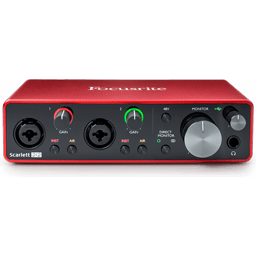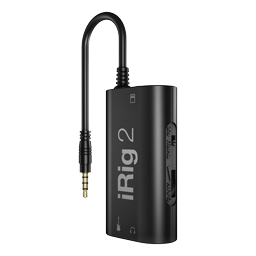Audio Interfaces
Computer Audio Interfaces
Audio interfaces have made great advances since they were first used by musicians. Instead of bulky systems full of cords, DJs and musicians need only to plug in a USB audio interface to master audio levels. Using an analog/digital audio converter, a computer can change analog signals sent from microphones or speakers into digital formats that you can edit with that computer. This type of interfacing equipment enhances sound and makes transfer easier.
What is a Computer Audio Interface?
Audio interfaces convert microphone and instrument audio signals into a format your computer and software can recognize. An audio interface also routes audio from your computer out to your headphones and/or studio monitors. Interfaces typically connect to your computer via USB cables, Thunderbolt, Firewire, internal cards, or even ethernet. Audio interfaces range in price from under $100 to several thousands of dollars, and even the most affordable interfaces sound great and can provide the basic features.
USB Mic or Audio Interface?
If you use only a single microphone and a USB mic works for you, then you may not need an audio interface. If you monitor on speakers or wish to use XLR microphones, then it might be time to check out a dedicated audio interface. Some advantages of an audio interface are:
- You are able to use any standard XLR microphone.
- You can use multiple microphones at a time (USB mics allow only one mic to connect).
- The headphone output in a USB interface is usually of a higher quality, and will generally sound better and louder than the headphone output of a USB mic or your laptop headphone jack.
- Most audio interfaces provide inputs for guitar/bass/keyboards as well as mics.
- Interfaces typically provide volume control for at least one pair of speakers and some even provide multiple headphone and speaker outputs.
Choosing a Computer Audio Interface
There are some key areas to pay attention to when deciding what the best audio interface is for preexisting equipment such as computers, speakers, mics, and instruments. Here are some of the main features to check out prior to choosing a system:
Analog inputs: Minimum for high-quality recordings is four, or eight for live music
- Analog outputs: Minimum is four; eight is ideal
- Digital I/O: A must-have for systems with preexisting digital gear
- Sample rate: How many times the analog signal is sampled per second
Digital I/O is especially important because you must make sure the interface I/O matches equipment I/O for a flawless transfer. If you're using preexisting digital equipment and the feature isn't available on the interface selected, you'll likely need a digital format converter.
Enhance present desktops and laptops with an interface that provides crisp audio results and provides options for multiple input and output sources. Visit B&H Photo and Video to find the latest in audio interfaces that provide high-resolution sound, and browse other computer audio equipment to build your system.




